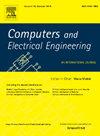基于物联网的入侵检测系统,采用可解释的多类深度学习方法
IF 4
3区 计算机科学
Q1 COMPUTER SCIENCE, HARDWARE & ARCHITECTURE
引用次数: 0
摘要
随着物联网(IoT)在各个领域的激增和安全威胁的增加,研究人员开发了网络入侵检测系统(IDS)攻击。这些机器学习(ML)和深度学习(DL)模型在检测和分类攻击方面非常强大;然而,它们具有黑箱性质,缺乏可解释性。可解释人工智能(XAI)正朝着这个方向努力,随着XAI研究的显著增加,它提高了模型的透明度和可信度。然而,它在网络安全和物联网入侵检测中的应用,尤其需要更多的工作来解释各种入侵检测模型,并解释各种网络攻击是如何发生的。这项工作提出了在四个数据集上训练的各种基于dl的IDS: NSL-KDD, UNSW-NB15, TON-IoT和X-IIoTID,并使用形状加性解释(SHAP)应用XAI来解释这些模型。利用四个数据集捕获不同的网络环境来彻底评估和解释模型。基于卷积神经网络(CNN)、长短期记忆(LSTM)和双向LSTM (Bi-LSTM)模型进行多类分类训练。为每个数据集选择最佳模型(基于性能和训练时间),并对其应用SHAP。此外,使用从SHAP生成的解释提取了一组新的15个特征,这些特征对模型的决策影响最大。与同类模型相比,在这些简化特征上训练的模型需要更少的训练时间,而对训练时间没有显著影响,并且实现了更高的性能。使用基于cnn的模型和CNN-X,在每个数据集中只使用15个特征的子集,该工作在NSL-KDD中实现了98.21%的模型准确率,在TON-IoT中实现了97.80%,在UNSW-NB15中实现了92.9%,在X-IIoTID数据集中实现了98.09%的模型准确率。该工作在提高IDS的效率和可解释性的同时,实现了较高的模型性能。©2017 Elsevier Inc.版权所有。本文章由计算机程序翻译,如有差异,请以英文原文为准。
IoT-based intrusion detection system using explainable multi-class deep learning approaches
With the surge in Internet of Things (IoT) across various domains and the rise in security threats, researchers have developed Intrusion Detection Systems (IDS) attacks in networks. These Machine Learning (ML) and Deep Learning (DL) models are powerful in detecting and classifying attacks; however, they have a black-box nature and lack interpretability. Explainable Artificial Intelligence (XAI) works towards this and improves the model's transparency and trustworthiness with research in XAI increasing significantly. However, its application within cybersecurity and IoT Intrusion Detection, particularly, requires more work to interpret various IDS models and provide explanations on how various cyber-attacks occur. This work proposes various DL-based IDS trained on four datasets: NSL-KDD, UNSW-NB15, TON-IoT and X-IIoTID and applies XAI using Shapely Additive Explanations (SHAP) to interpret these models. Utilizing four datasets captures diverse network environments to thoroughly evaluate and interpret the model. Convolutional Neural Networks (CNN), Long Short-Term Memory (LSTM) and Bidirectional LSTM (Bi-LSTM) based models were trained for multi-class classification. The best model (based on performance and training time) was chosen for each dataset and SHAP was applied to it. Furthermore, a novel set of 15 features, which impacted the model's decisions the most, were extracted using explanations generated from SHAP. The models trained on these reduced features required less training time without significant impact on training time and achieving a higher performance in comparison to peer models. This work achieves model accuracies of 98.21 % in NSL-KDD, 97.80 % in TON-IoT, 92.9 % in UNSW-NB15 and 98.09 % in X-IIoTID dataset using a CNN-based model, CNN-X and using a subset of only 15 features in each dataset. This work achieves high model performances, while improving the efficiency and interpretability of IDS.
© 2017 Elsevier Inc. All rights reserved.
求助全文
通过发布文献求助,成功后即可免费获取论文全文。
去求助
来源期刊

Computers & Electrical Engineering
工程技术-工程:电子与电气
CiteScore
9.20
自引率
7.00%
发文量
661
审稿时长
47 days
期刊介绍:
The impact of computers has nowhere been more revolutionary than in electrical engineering. The design, analysis, and operation of electrical and electronic systems are now dominated by computers, a transformation that has been motivated by the natural ease of interface between computers and electrical systems, and the promise of spectacular improvements in speed and efficiency.
Published since 1973, Computers & Electrical Engineering provides rapid publication of topical research into the integration of computer technology and computational techniques with electrical and electronic systems. The journal publishes papers featuring novel implementations of computers and computational techniques in areas like signal and image processing, high-performance computing, parallel processing, and communications. Special attention will be paid to papers describing innovative architectures, algorithms, and software tools.
 求助内容:
求助内容: 应助结果提醒方式:
应助结果提醒方式:


